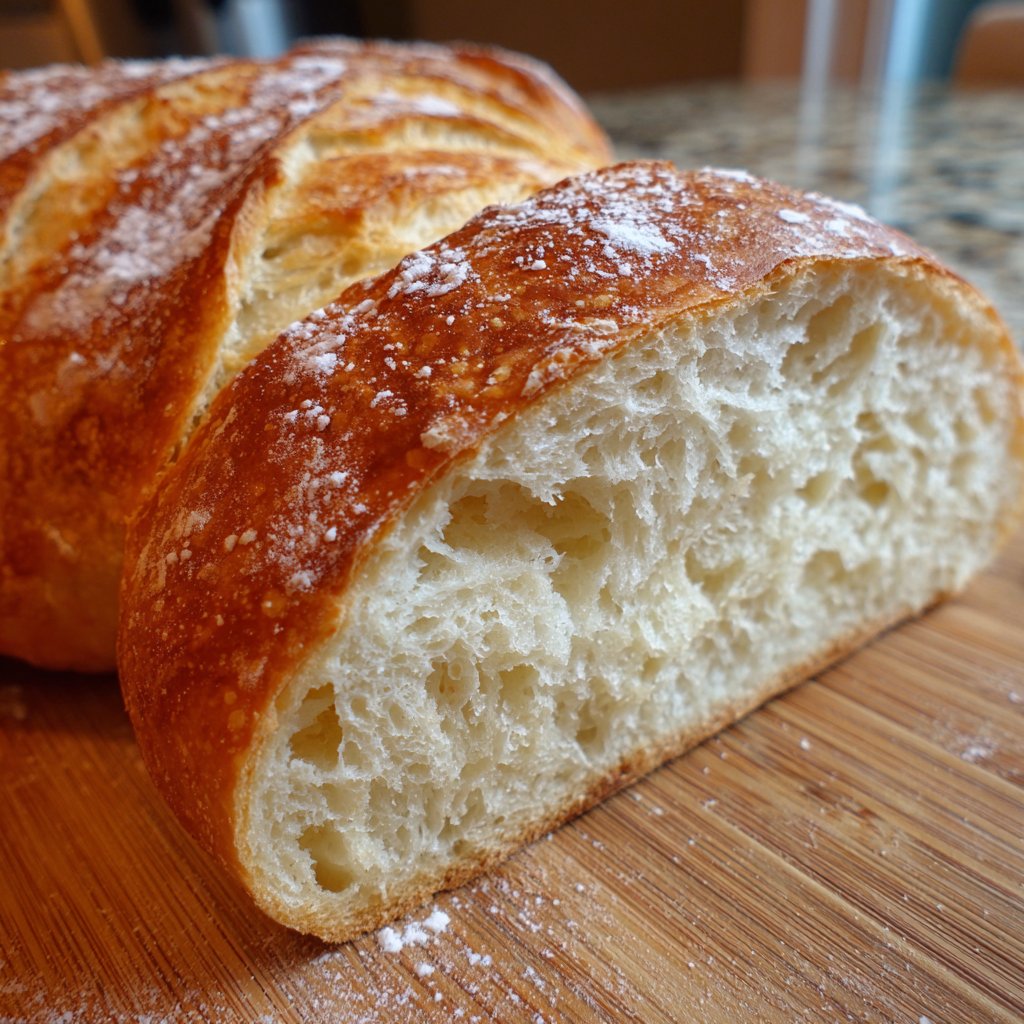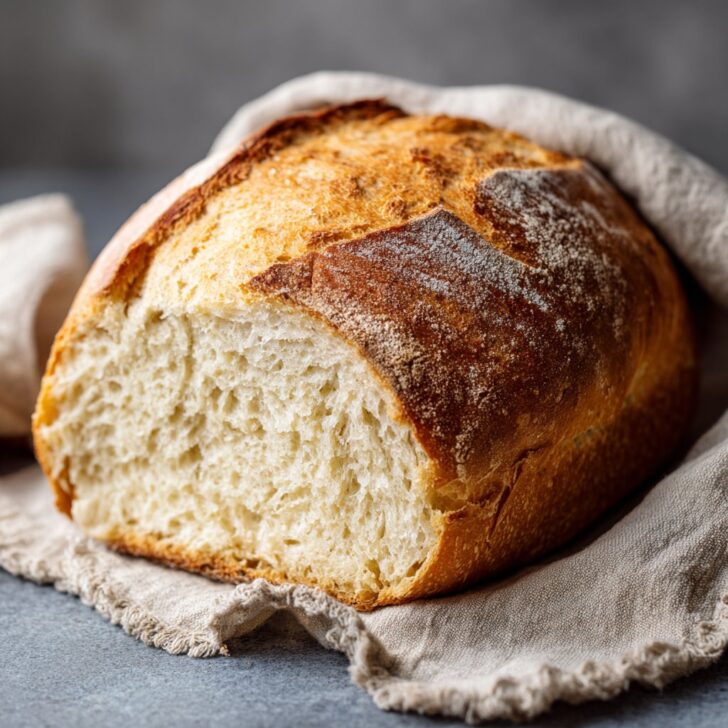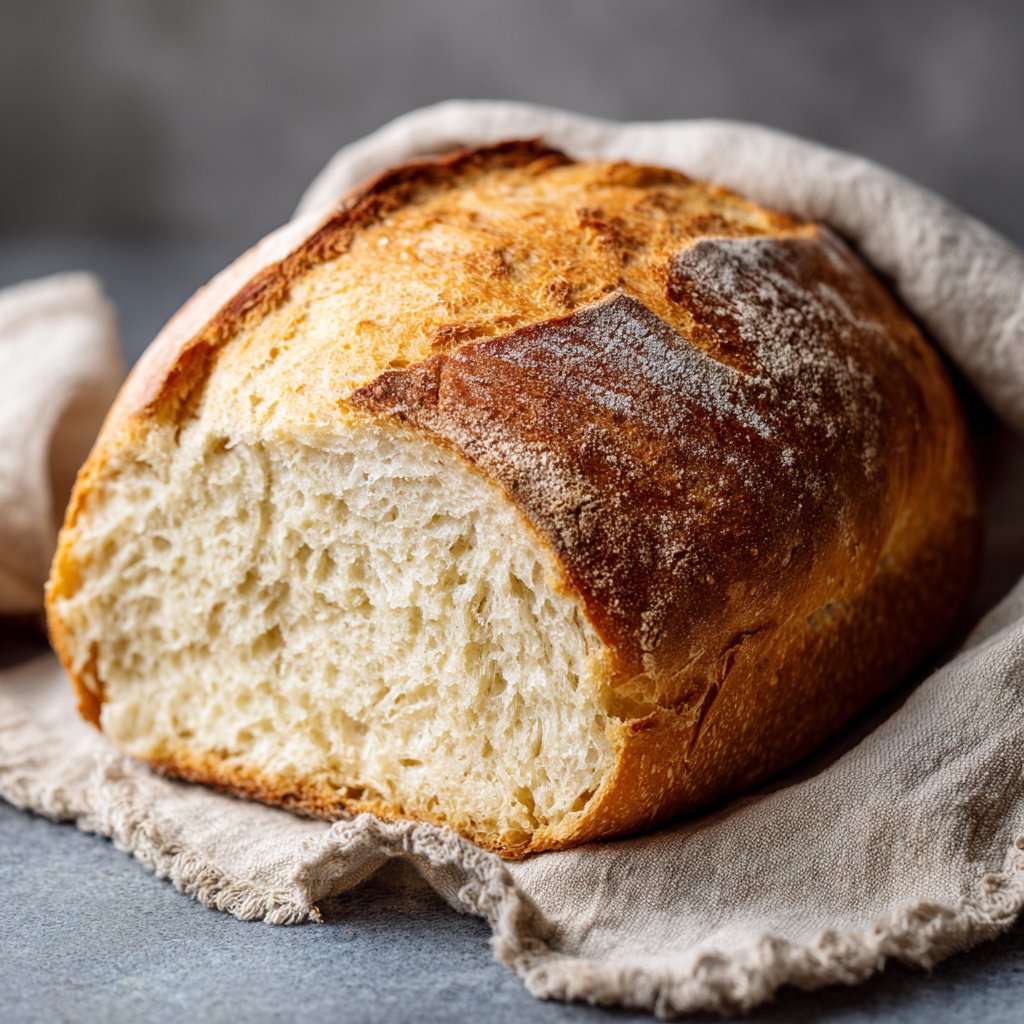Hey y’all! If you’ve ever dreamed of pulling a warm, pillowy loaf from your oven, this Soft Homemade Bread Recipe for Beginners is your golden ticket. It’s the kind of bread that’s perfect for sandwiches, soaking up soups, or simply slathering with butter for a comforting snack. With just a handful of pantry staples, even first-time bakers can achieve bakery-quality results at home. Ready to make your kitchen smell amazing? Let’s get cooking!
Why You’ll Love This Soft Homemade Bread Recipe for Beginners
- Super easy instructions – perfect if you’ve never baked bread before.
- Uses basic ingredients you already have at home.
- Comes out incredibly soft, fluffy, and flavorful every time.
- No fancy equipment needed – just a loaf pan and your oven.
- Great for meal prep because it stays fresh for days!
Ingredients for Soft Homemade Bread Recipe for Beginners
- 3 ¼ cups (400g) all-purpose flour, plus extra for dusting
- 1 packet (2 ¼ tsp) active dry yeast
- 2 tablespoon granulated sugar
- 1 teaspoon salt
- 1 cup (240ml) warm water (110°F/43°C)
- ⅓ cup (80ml) warm milk (110°F/43°C)
- 2 tablespoon unsalted butter, melted
- 1 tablespoon olive oil (for greasing bowl)
Step-by-Step Directions: Soft Homemade Bread Recipe for Beginners
Step 1: Activate the Yeast
In a large mixing bowl, combine the warm water, warm milk, sugar, and yeast. Stir gently and let sit for 5-10 minutes until the mixture is foamy and bubbly.
Step 2: Make the Dough
Add the melted butter and salt to your yeast mixture. Gradually add the flour, one cup at a time, mixing with a wooden spoon or dough hook until a soft dough forms.
Step 3: Knead the Dough
Turn the dough onto a lightly floured surface. Knead for 8-10 minutes until the dough is smooth and elastic. If using a stand mixer, knead with the dough hook for about 6-7 minutes.
Step 4: First Rise
Place the dough in a lightly greased bowl, turning it to coat all sides with oil. Cover with a damp cloth or plastic wrap. Let it rise in a warm place for 1 to 1.5 hours, or until doubled in size.
Step 5: Shape the Loaf
Punch down the dough to release air. Turn it out onto a surface and shape into a log. Place the dough into a greased 9×5-inch loaf pan. Cover and let rise for another 30-40 minutes, or until it has risen about an inch above the rim of the pan.

Step 6: Bake
Preheat your oven to 350°F (175°C). Bake the bread for 28-32 minutes, or until golden brown and the loaf sounds hollow when tapped.
Step 7: Cool and Enjoy
Remove the loaf from the pan and transfer to a wire rack. Cool at least 30 minutes before slicing for the softest texture.
Notes & Helpful Tips
- If your kitchen is cool, let your dough rise in an oven with just the light on for gentle warmth. Need more yeast tips? Check out this yeast guide from King Arthur Baking.
- Don’t skip kneading! Proper kneading ensures your bread is light and airy.
- Brush the top with melted butter right out of the oven for an extra soft crust.
Variations: Soft Homemade Bread Recipe for Beginners
- Whole Wheat Loaf: Substitute half the all-purpose flour with whole wheat flour for a heartier taste.
- Herb Bread: Add 1 tablespoon of dried Italian herbs or fresh chopped rosemary to the dough.
- Sweet Bread: Mix in ⅓ cup raisins and a sprinkle of cinnamon for a delightful breakfast loaf.
Required Equipment for Soft Homemade Bread Recipe for Beginners
- Large mixing bowl
- Wooden spoon or stand mixer with dough hook
- 9×5-inch loaf pan
- Kitchen towel or plastic wrap
- Wire rack for cooling
Storage Instructions (Shelf Life)
Store cooled bread in an airtight bag or container at room temperature for up to 4 days. For longer storage, slice and freeze for up to 2 months. Thaw at room temperature or toast slices straight from the freezer for best results.
Serving Ideas & Pairings for Soft Homemade Bread Recipe for Beginners
- Serve with creamy soups like tomato or potato leek for a cozy meal.
- Make epic sandwiches with your favorite deli meats and cheeses.
- Enjoy toasted with butter and homemade jam for breakfast.
- Pair with a fresh salad for a light lunch.
Pro Tips for Soft Homemade Bread Recipe for Beginners
- Weigh your flour with a kitchen scale for the most accurate results (learn more about measuring flour here).
- Don’t rush the rise time – patience means a fluffier loaf!
- Use a digital thermometer; bread is done when the center hits 190–200°F (88–93°C).
Soft Homemade Bread Recipe for Beginners: FAQ
- Can I use instant yeast instead of active dry yeast?
- Yes! Substitute in the same amount, skip the activation step, and mix it directly with the flour.
- Why is my bread dense, not soft?
- This often happens if the dough wasn’t kneaded long enough or didn’t rise fully. Use proper kneading and give enough time for both rises.
- How do I know when the bread is baked through?
- The top should be golden, the loaf should sound hollow when tapped, and a thermometer inserted in the center should read 190–200°F (88–93°C). For more tips on baking bread, check out this step-by-step bread tutorial from Serious Eats.
Prep time: 15 minutes
Rise time: 1 hour 45 minutes
Bake time: 30 minutes
Total time: About 2 hours 30 minutes
Ingredients
- 4 cups all-purpose flour
- 2 1/4 teaspoons active dry yeast
- 2 tablespoons granulated sugar
- 1 1/2 teaspoons salt
- 1 1/4 cups warm water (about 110°F/43°C)
- 2 tablespoons unsalted butter, melted
- 1/2 cup whole milk
- 1 tablespoon vegetable oil (for greasing)
Instructions
-
1In a large bowl, combine warm water, sugar, and yeast. Let it sit for 5-10 minutes until foamy.
-
2Add melted butter, milk, and salt to the yeast mixture. Gradually stir in flour until a soft dough forms.
-
3Turn the dough onto a floured surface and knead for 8-10 minutes until smooth and elastic.
-
4Place the dough in a greased bowl, cover, and let rise in a warm place for 1 hour or until doubled in size.
-
5Punch down the dough, divide in half, and shape into loaves. Place in greased loaf pans. Cover and let rise for 30 minutes.
-
6Bake in a preheated oven at 350°F (175°C) for 30 minutes or until golden brown. Cool before slicing.
Approximate Information for One Serving
Nutrition Disclaimers
Number of total servings shown is approximate. Actual number of servings will depend on your preferred portion sizes.
Nutritional values shown are general guidelines and reflect information for 1 serving using the ingredients listed, not including any optional ingredients. Actual macros may vary slightly depending on specific brands and types of ingredients used.
To determine the weight of one serving, prepare the recipe as instructed. Weigh the finished recipe, then divide the weight of the finished recipe (not including the weight of the container the food is in) by the desired number of servings. Result will be the weight of one serving.
Did you make this recipe?
Please consider Pinning it!!


